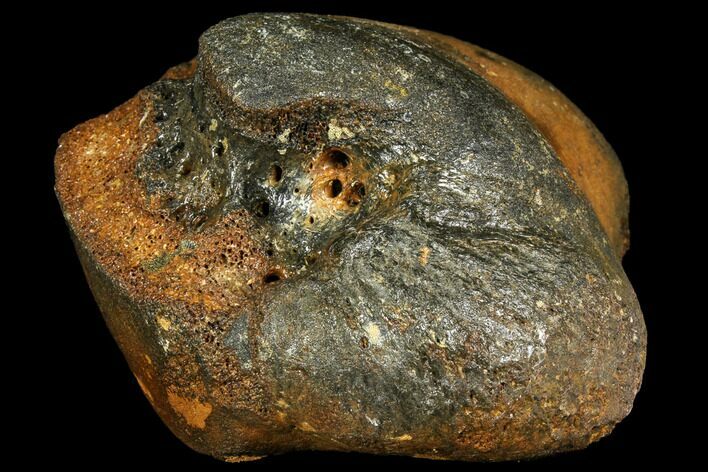This Specimen has been sold.
5" Woolly Mammoth Knee Bone - Rhine River, Germany
This is a 5.0" fossil patella (Knee Bone) from a Woolly Mammoth (Mammuthus primigenius), from Rhine River, Germany and is between 20 and 50 thousand years old.
Comes with a stand.
Comes with a stand.
The gravel deposits along the Rhine River used to produce a large number of Pleistocene fossils while miners quarried for gravel aggregate. They have become much harder to come by in recent years as the quarry operations have become more mechanized, often destroying fossils in the process.
About The Woolly Mammoth
The Woolly Mammoth (Mammuthus primegenius) is an iconic Pleistocene animal. It had long, wooly hair, tusks that extended up to 9 feet, and stood about 12 feet tall. They ranged across the northern hemisphere and were one of the most abundant Pleistocene creatures, ranging from eastern Eurasia throughout most of North America. Their existence overlapped with that of humans: early cave paintings have been discovered depicting these massive mammals, and humans likely hunted them to extinction in some areas.
They are also some of the most studied prehistoric animals in part because many carcasses have bene preserved in the Siberian permafrosts, keeping skin, muscle tissues, and even their distinctive woolly hair intact. Recent genomic sequencing of chromosomal DNA in some of these preserved specimens has revealed that Woolly Mammoths are most closely related to African elephants: their chromosomal DNA is up to 99.5 percent identical.
The Woolly Mammoth (Mammuthus primegenius) is an iconic Pleistocene animal. It had long, wooly hair, tusks that extended up to 9 feet, and stood about 12 feet tall. They ranged across the northern hemisphere and were one of the most abundant Pleistocene creatures, ranging from eastern Eurasia throughout most of North America. Their existence overlapped with that of humans: early cave paintings have been discovered depicting these massive mammals, and humans likely hunted them to extinction in some areas.
They are also some of the most studied prehistoric animals in part because many carcasses have bene preserved in the Siberian permafrosts, keeping skin, muscle tissues, and even their distinctive woolly hair intact. Recent genomic sequencing of chromosomal DNA in some of these preserved specimens has revealed that Woolly Mammoths are most closely related to African elephants: their chromosomal DNA is up to 99.5 percent identical.
SPECIES
Mammuthus primigenius
LOCATION
Rhine River, Germany
SIZE
5.0 x 4.6"
CATEGORY
SUB CATEGORY
ITEM
#111901
We guarantee the authenticity of all of our specimens.
 Reviews
Reviews














